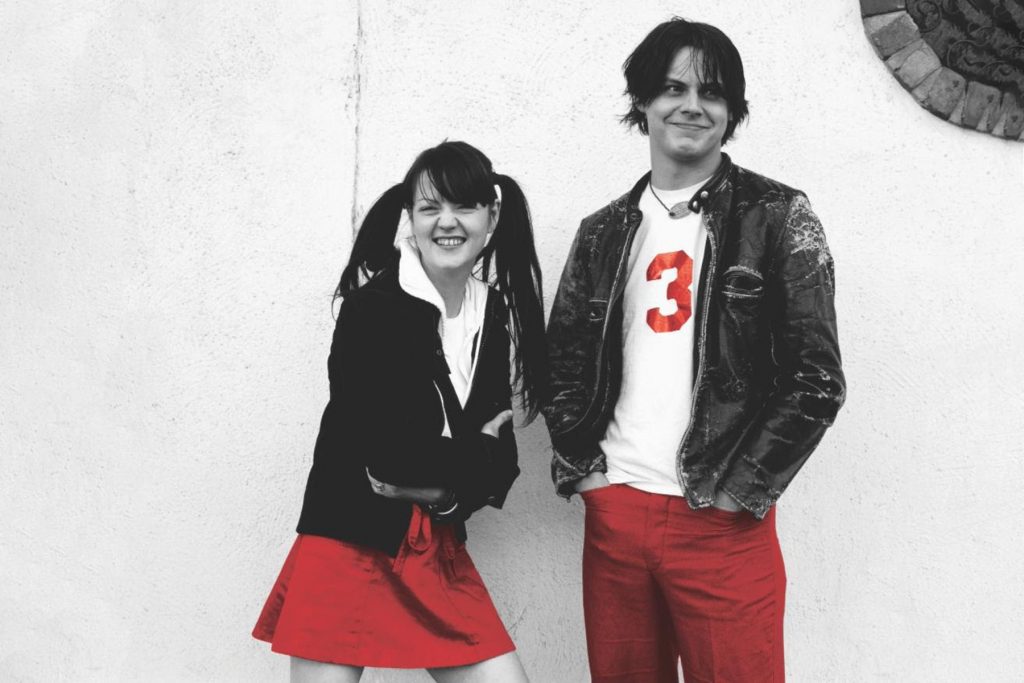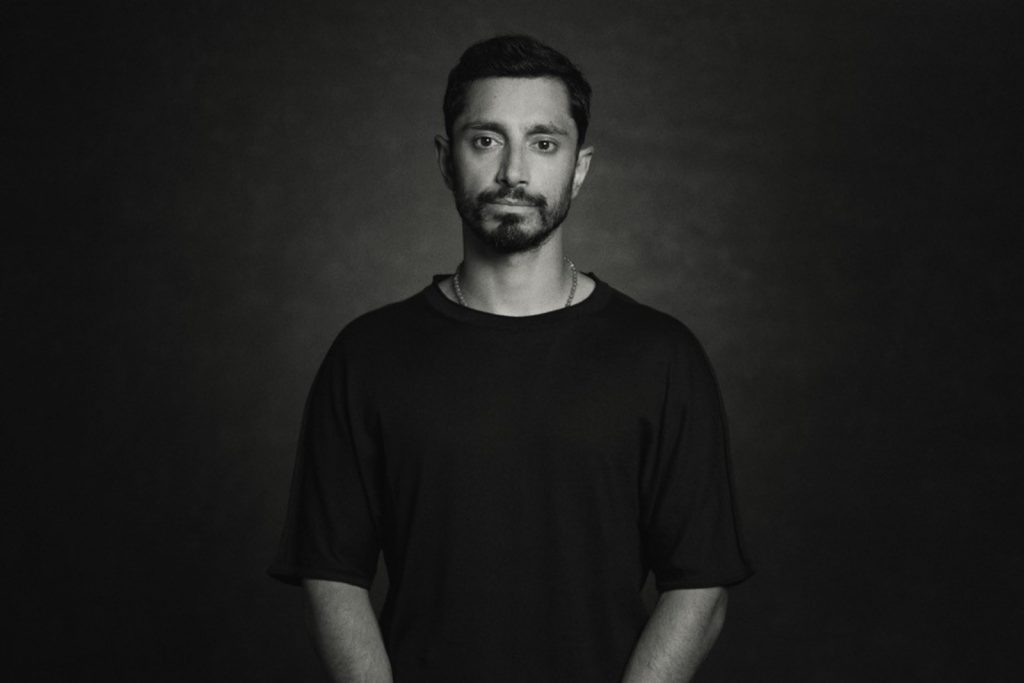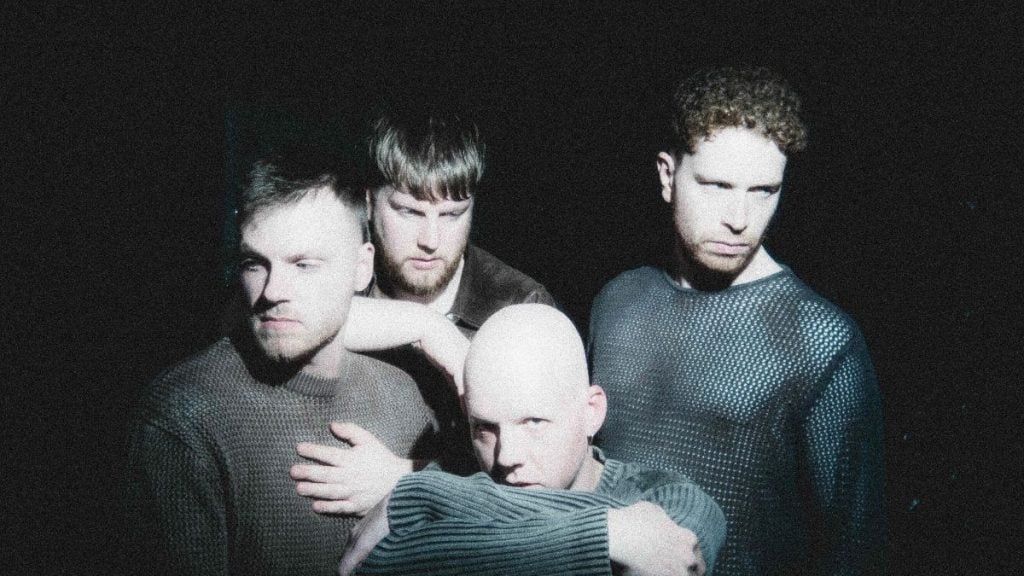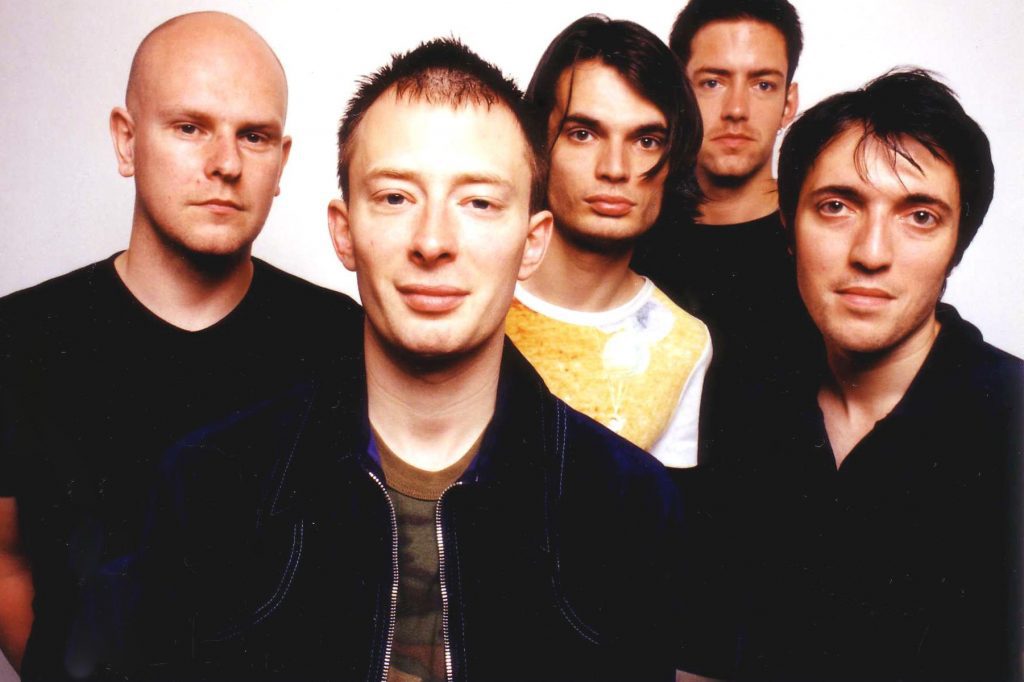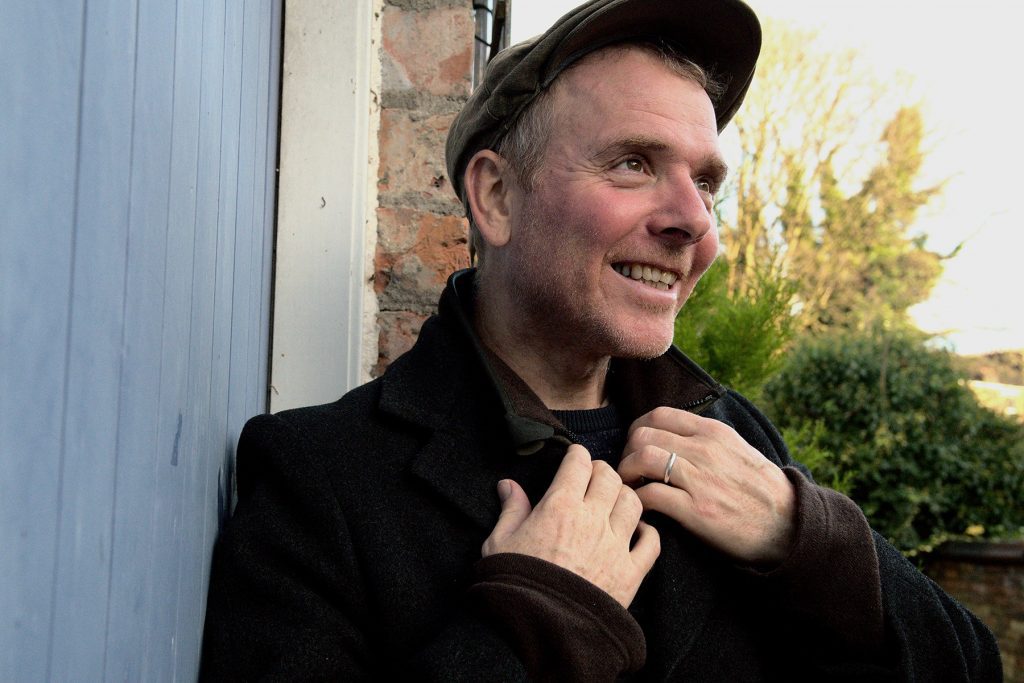
How Belle and Sebastian Became a Killer Live Band
Belle and Sebastian had big plans for 2020, starting with a long-awaited trip to Los Angeles to record a new album with engineer and producer Shawn Everett (Weezer, the Killers, the War on Drugs). When the pandemic ruled that out, the Scottish sovereigns of indie pop settled in and looked for something else to do.
“Personally speaking, I probably adapt better than most folk,” says singer Stuart Murdoch, calling from his Glasgow home after a long walk in inclement weather. He says his experience with chronic fatigue syndrome for much of his twenties prepared him well for lockdown: “I had years of being a sort of pensioner anyway. I got used to that lifestyle of not seeing many people. So I haven’t had anything to complain about.”
He and the band ended up reviewing the live recordings they’d made of their 2019 world tour, which included a fans-only cruise in the Mediterranean. They liked what they heard so much that they decided to release a live album, What to Look for in Summer, out December 11th. For any fan who misses seeing them in concert, it’s a double-LP shot of bespoke melodic fun, and its track list doubles as a guided tour through Belle and Sebastian’s career — from the quietly sardonic scenes of 1996’s If You’re Feeling Sinister (which recently made our list of the 500 Greatest Albums of All Time) and 1998’s The Boy With the Arab Strap, through the growing pains of 2000’s Fold Your Hands Child, You Walk Like a Peasant; the flashy reinvention of 2003’s Dear Catastrophe Waitress; and everything else.
blogherads.adq.push(function () {
blogherads
.defineSlot( ‘medrec’, ‘gpt-dsk-tab-article-inbody1-uid0’ )
.setTargeting( ‘pos’, [“mid-article”,”mid”,”in-article1″,”mid-article1″] )
.setSubAdUnitPath(“music//article//inbody1”)
.addSize([[300,250],[620,350],[2,2],[3,3],[2,4],[4,2]])
;
});
“I would propose that some of the versions on this record are definitive,” Murdoch says, mentioning “My Wandering Days Are Over” and “The Fox in the Snow.” “You know, I went back and listened to some of the early records. I guess they have a charm to some people, but they are quite flimsy. … I had all sorts of trouble with my energy at the time. I was struggling just to make those records.”
That’s not the case on What to Look for in Summer, whose confident, upbeat pizzazz might surprise anyone who hasn’t seen Belle and Sebastian in a while. Murdoch took the opportunity to look back on how the band perfected its approach to touring over the years — and offer some hints about where they’re headed next.
What do you remember about Belle and Sebastian’s earliest tours in the Nineties? How were your first experiences of trying to put the music across to an audience?
It would be easy to say that the early touring experience of Belle and Sebastian was chaotic and unsuccessful. But I think it was more that it was hit-and-miss. We had to do it the hard way. I had this thing where I didn’t want to play in any regular rock venue. I hated rock & roll. You know how in Spinal Tap, they say “rock & roll”? I hated that stuff. I hated the clichés. I hated the dark, smoky rooms and people yelling out. I knew the band were a delicate proposition, so we always wanted to try different, interesting venues — old churches, art schools, municipal halls. It felt like the engineers were against us, the promoters were against us. When you do things the hard way, people get tired.
I remember we played three shows at Manchester Town Hall, probably about a year into the life of the band — ’97, I think. This was a big deal for us, our first big shows in England. It was this beautiful, ornate room covered with expensive paintings. We had two shows on a Saturday and one on a Sunday, and we decided to play in the round for some reason. We put the stage in the middle of the room, and projected the sound around us. We felt that the audience would get closer to it that way. But it was pretty disastrous. You can imagine: There were these very high ceilings, and the sound just disappeared, and Chris [Geddes, B&S keyboardist] was hungover and puking in a bucket. We had two records out at that point, but we were trying to play all new records — mostly stuff off The Boy With the Arab Strap that hadn’t even been recorded yet. We already felt that Tigermilk and Sinister were in the past, even though it was only six months ago. [Laughs.]
How about the first time you brought the band to America, the trip that inspired the song “Seymour Stein”?
The first time we came to America was in ’96, just after we recorded Sinister. We were being wooed by a record company, and they put us on a plane and showed us around New York. But we didn’t actually play any shows. Stevie [Jackson, B&S guitarist] was still working, so he couldn’t come on that trip. I think that was the one he was talking about [on “Seymour Stein”].
blogherads.adq.push(function () {
blogherads
.defineSlot( ‘medrec’, ‘gpt-dsk-tab-article-inbody2-uid1’ )
.setTargeting( ‘pos’, [“mid-article2″,”mid”,”in-article2″,”mid-article”] )
.setSubAdUnitPath(“music//article//inbody2”)
.addSize([[300,250],[300,251],[620,350],[2,4],[4,2],[3,3]])
;
});
We came back the same time next year, and we played at the Angel Orensanz Center in New York, which had just opened up for shows. It was so exciting for us to be in New York and actually playing music. I remember the crowd being warm and exciting and exotic. You know, for seven or eight regular people from Scotland, a good number of freaks showed up at our shows, in a nice way. It was a great audience. I remember plaster fell off the ceiling and landed on Chris’ keyboard setup.
The title song from The Boy With the Arab Strap has become a beloved, crowd-pleasing set closer over the years, and it’s a highlight of this live album. Did it always have that effect, when you first played it in 1997?
No, it didn’t. That whole business is a bit of a hazy mystery, how that particular song became the one. It would be nice to say there was a moment when somebody managed to get onstage in Vancouver or something, and that’s where it all started. But I don’t really remember that happening. I remember it being a bit tense at first, bringing people up onstage. I was always getting lots of complaints from the venue and the promoters and our tour managers. But now we have a safety meeting before every show, and we say, “OK, you can only have so many people.” I don’t mind that. The last thing you want to do is for somebody to get hurt. There have been some pretty hectic times where it got a little out of hand, and it was just absolutely mobbed and we felt the stage shuddering.
What do you think it is about that song that brings out that energy in Belle and Sebastian fans?
I’m not sure! [Laughs] It does have that rhythm. It never fails. Chris does his little introduction, and everybody cheers. We don’t have another song quite like that. Everybody digs it.
When I wrote that song, I remember I went to the piano and played it for Isobel [Campbell, former B&S singer-cellist and Murdoch’s girlfriend at the time], and she was not impressed. She thought it sounded like something you would hear in a British pub with a lot of drunk people. She was really down on it. The funny thing is, it’s been over 20 years, and she left the band quite a while ago, but it is! You have all these kids sitting next to me on the piano or standing around, and it is a bit of an old British pub song.
blogherads.adq.push(function () {
blogherads
.defineSlot( ‘medrec’, ‘gpt-dsk-tab-inbodyX-uid2’ )
.setTargeting( ‘pos’, [“mid”,”mid-articleX”,”in-articleX”,”mid-article”] )
.setSubAdUnitPath(“music//article//inbodyX”)
.addSize([[300,250],[300,251],[3,3],[620,350]])
.setLazyLoadMultiplier(2)
;
});
What about the tours a few years later, around Dear Catastrophe Waitress, when you were introducing a new side to the band? How did those shows go over?
There was something that clicked around that time. A little bit earlier, I remember we made Fold Your Hands, and then we kind of disappeared for a while, because my health wasn’t good. So we took some time off, and then Isobel went away and did something else, and Stuart David, the original bass player, went away and did something else. When we came back together, the remainder of the band had this feeling that we were really up for it. We decided to do it properly. Bob [Kildea] had just joined on bass. We brought in a proper crew for the first time. Instead of me trying to help with the load-out at the end of the gig, they were like, “It’s all right, you just stick to playing.” So you could focus on the shows, and the venues were a little bit more standard, and we started having the most fun in our whole life.
You talked about how you were disdainful of anything that seemed too “rock & roll” at first. Did that change for you around that time?
Well, the good thing about the band is that we did manage to do it on our own terms. I remember when we started that tour, we played a few shows in Scotland, and then very quickly we were onstage at the Royal Albert Hall in London. It was a huge auditorium, but we weren’t rocking out as such. We were still doing our thing. We were just a little more robust.
By the album after Catastrophe Waitress [2006’s The Life Pursuit], Bob had established himself a bit more on guitar, and people in the band said, “Let’s not do the baroque arrangements. Let’s play other things.” That album definitely moved more. It’s a bit more of a rocker, so to speak. Also during that time, we were having so much fun playing the shows. We would always play cover versions. When you get to do a Sly Stone song, you can play at being rock & roll stars.

Marisa Privitera Murdoch*
How important would you say live performance is now for you, compared to songwriting or record-making?
When it started out, it was all about making records. It was an idea. It was all in my head, and it all started in a bedroom. I could never imagine the whole thing carrying on the way it did, and I could never imagine playing these shows. So when it clicked about halfway through that shows are fun … There’s a 50/50 split now. There’s a nice yin-and-yang quality about being in a band, where you go home and make your record and it’s introspective, and then everything changes and you go out on the road. And you wouldn’t have it any other way.
blogherads.adq.push(function () {
blogherads
.defineSlot( ‘medrec’, ‘gpt-dsk-tab-inbodyX-uid3’ )
.setTargeting( ‘pos’, [“mid”,”mid-articleX”,”in-articleX”,”mid-article”] )
.setSubAdUnitPath(“music//article//inbodyX”)
.addSize([[300,250],[300,251],[3,3],[620,350]])
.setLazyLoadMultiplier(2)
;
});
You’ve maintained a high level of songwriting over the years, particularly in your lyrics, which are full of these distinct writerly observations. How easy is it to keep that style flowing?
I mean, I wouldn’t write a song if it wasn’t easy. I don’t think you should try that hard to write songs. What happens is that your style changes, and you write from a different perspective. Maybe a more personal perspective. But I’ve always found that if I try to give myself a project — if I try to write a song a certain way — it never comes out that well. [Laughs] So I just write lyrics that reflect my everyday style, which is either moaning or dreaming.
Are there any Belle and Sebastian songs that you’ve never been able to get to work live?
There’s a very long song called “This Is Just a Modern Rock Song,” and at every gig, there’s somebody planted in the audience, and at an opportune time — or an inopportune time — they’ll shout for that song. Sometimes we try to start playing it. But we’ve never actually sat down and tried to work it out, so it peters out. It just doesn’t work. The other one is “The Rollercoaster Ride,” which is a really nice recording, the last song on Arab Strap. For some reason, that song never really works. We’ve played it maybe once or twice.
One of our most-criticized LPs at the time, Fold Your Hands Child, we played in full last summer, and that’s why there are quite a few of those songs on this record. We were challenging ourselves to play some songs we’ve never played before, like “Chalet Lines” and “Beyond the Sunrise.” All of those came across; they did OK.
One of the earliest songs you play on the live album is “My Wandering Days Are Over,” from Tigermilk. What’s it like to play that song now?
I always liked that song. That was the first song I wrote with the modern band [lineup]. I had flirted with various people before the band officially got together, but I remember meeting Isobel at a New Year’s party in 1996, and then, whether it was inspired by her or inspired by the group coming together, I wrote “My Wandering Days Are Over.” I felt so relieved, and it made things much easier for me, to have a band around. I still feel that when we play that song.
Another song that sounds great on the album is “Funny Little Frog.” Where did that song come from for you?
That one’s a classic unrequited-love song, isn’t it? I’m writing about having a ghost in my life. I suppose that’s just a person that you can’t actually have. They become a ghost in your head. It’s funny, Stevie says this as well, that some songs, when you play them live, you can really get your teeth into them. You can play it harder, faster, and it sounds better and better. It almost becomes a soulful sort of thing. We always enjoy that one.
blogherads.adq.push(function () {
blogherads
.defineSlot( ‘medrec’, ‘gpt-dsk-tab-inbodyX-uid4’ )
.setTargeting( ‘pos’, [“mid”,”mid-articleX”,”in-articleX”,”mid-article”] )
.setSubAdUnitPath(“music//article//inbodyX”)
.addSize([[300,250],[300,251],[3,3],[620,350]])
.setLazyLoadMultiplier(2)
;
});
One other song that always sounds great live is “Stay Loose.” That’s a song that blew a lot of fans’ minds when they first heard it — it sounded so different from anything Belle and Sebastian had done.
I’m glad you mentioned “Stay Loose.” If you polled the rest of the band on their favorite number, that would come up pretty strong. The way that it resolves with the harmonies on the guitar solo, it gives the guys a chance to let loose for once. We dropped it for three or four years, because I didn’t think it was cutting it. Then we came back to it, and now it’s really good. It goes on a journey, where it comes down and I sit on the end of the stage and then everyone comes up for the final chorus, and then the boys send it home with the dueling guitars. It’s fun.
You mentioned that the plan at the beginning of this year had been to make an album in L.A. What’s the status of that project?
Well, we postponed the trip to September, but then it was clear that nobody was going to America, so we decided to record at home. We’ve been changing our rehearsal studio to a recording studio. Everyone’s been down there with hammers and nails and paint, and also trying to make the studio safe to record in, in these times of the pandemic. We were meant to start there [in November], and then we just got a notice that one of the band has to isolate. It’s immaculate timing, very Belle and Sebastian.
I just sent a text to the band saying that I’d [listened to] some of the songs for this record, and it’s hard to go back to. It’s almost like going back to a house where everything’s covered in dust sheets and cobwebs. So what I’m going to propose to them is that we start completely fresh with new stuff. The roster of new songs is very light, shall we put it that way. I haven’t done anything. But that shows you the confidence I have with the group. We’ll just start jamming around, and eventually we’ll go back to the songs we were working on before.
Depending on how long that takes, it will have been at least six years since the last proper studio album of all-new songs. What do you think we’ll be hearing when we can absorb the sound of Belle and Sebastian in 2021 or 2022?
I have absolutely no idea. You’d think that after all that time between proper LPs, which our record label is always reminding us, that we’d come out fighting. But you never know. It might end up really introspective and poetic and pretty because of where our heads are at right now with lockdown. That might just be what people need.
blogherads.adq.push(function () {
blogherads
.defineSlot( ‘medrec’, ‘gpt-dsk-tab-inbodyX-uid5’ )
.setTargeting( ‘pos’, [“mid”,”mid-articleX”,”in-articleX”,”mid-article”] )
.setSubAdUnitPath(“music//article//inbodyX”)
.addSize([[300,250],[300,251],[3,3],[620,350]])
.setLazyLoadMultiplier(2)
;
});
